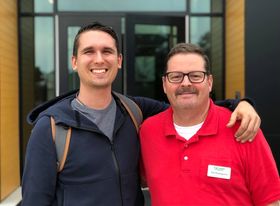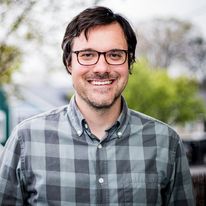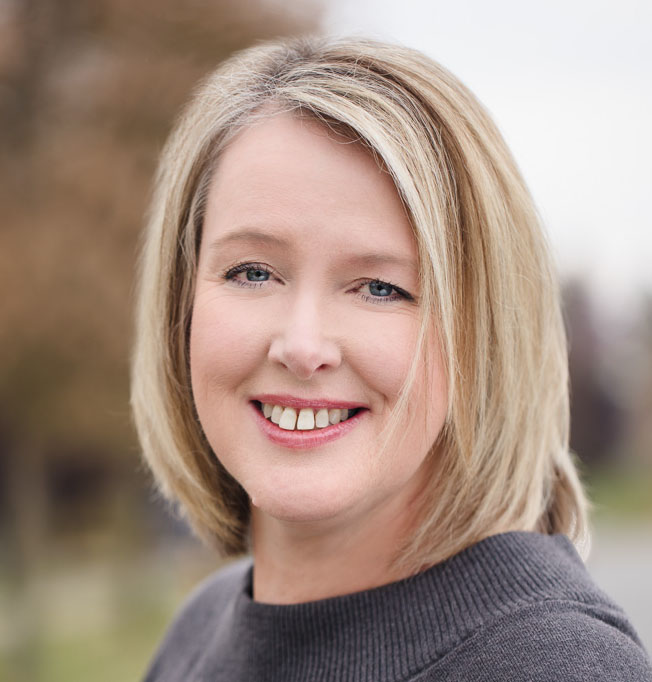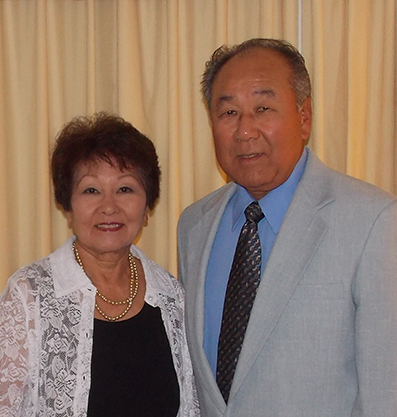
A Generational Divide - Understanding Perspectives in the Adventist Church

A Generational Divide - Understanding Perspectives in the Adventist Church
This project has so much to offer that we must request you orient your device to portrait or find a larger screen. You won't be disappointed.
Kaleb Eisele is founder of the storytelling platform Humans of Adventism. Although he grew up Adventist and is a member of the Seventh-day Adventist church today, at one point in his life, he left the denomination. As a young person and a member of the Millennial generation, he felt unheard within the organization.

“When I left the church, I didn’t feel like my voice mattered,” Eisele said. “I felt like my job was to be quiet and to do what I was told — kind of to just accept the offering plate job or accept the choir singing job, which I didn’t want to do.
“Honestly, as someone who was working full-time, in college, married … I really felt like, ‘I’m sorry, I don’t want to be a junior deacon. I’m sorry I don’t want to join the choir. I have plenty of things to offer the church, but not those things.’”
According to Eisele, his stepfather, Tim Baumgarten, played a significant role in his decision to return to the church. Baumgarten is a member of the Baby Boomer generation and, as a corporate trainer, works often with the topic of intergenerational communication. He applies his skills at work, in church and even within his family.
"I really felt like, ‘I’m sorry, I don’t want to be a junior deacon. I’m sorry I don’t want to join the choir. I have plenty of things to offer the church, but not those things.’"
-- Eisele
“One of the great things Tim has always done in our relationship is just ask my opinion,” Eisele said. “And I think that was something really important to me as a young person in Adventism.”
According to Chuck Underwood, a generational researcher and the founder of The Generational Imperative, Inc., generations are determined by a set of core values. A significant change in such values within a specific age group indicates a generational shift. Considering the huge role values play in determining a cultural generation, it would not be surprising, then, to see people from different age groups clashing over controversial social and religious topics.

Matt Stevens
Matt Stevens is a Christian Millennial. He was raised an Adventist and grew up in Adventist education from elementary school to university, having attended Forest Lake Academy in Florida and studied pastoral care at Southern Adventist University in Tennessee. However, he decided to leave the church when he was 20 years old.
Up until this point, Stevens had been questioning his view of Christianity and the church since high school. He said he analyzed many different aspects, including his differing views of science, sexuality, and race and gender issues with the church. However, Stevens said his tipping point occurred while he was lifeguarding at a pool in Orlando.
During an adult swim session, a man approached Stevens and started asking him questions about where he went to school. Stevens told the man that he went to a Bible college in Chattanooga, Tennessee. The man said he knew the Chattanooga area and further asked which school he attended. Stevens responded that he went to Southern Adventist University. At the mention of the word “Adventist,” the man said, “Oh,” and swam away, according to Stevens.
“That was a massively jarring experience because in my goal, at the time, of wanting to become a chaplain, I was wanting to be able to connect with people and love and serve them,” Stevens said. “And the fact that [the name] ‘Adventist’ was becoming … a barrier … [I] had to deconstruct things. And that's when I was like, ‘Okay … [I] don't want to call myself an Adventist anymore. I'm still a Christian, but I'm not an Adventist at this point in time.”
Currently, Stevens said he classifies himself as a non-affiliated Christian. He does not regularly attend a church body due to having young children and also the pandemic. However, he engages in worship and spiritual thought through books, podcasts and online church services.

Cheri Clark
Cheri Clark is an Adventist Gen Xer. She was first introduced to Adventism in the sixth grade when her parents received a flyer for an Adventist revelation seminar. Her parents went to the seminar and started bringing their family to church after the event.
Clark began attending an Adventist school in the seventh grade and said she appreciated the smaller, family feel to the school. She went to an Adventist boarding school in high school but left the church shortly after graduation. According to Clark, her parents stopped attending church after having a conflict with another member. Because her family did not attend church anymore, she stopped going too. During that time, Clark said if someone asked her what her religion was, she would have probably have said she was Adventist.
However, she did not personally consider herself an Adventist because she was not going to church.
About 12 years later, Clark was married and raising her first child. Just like her parents, she received a flyer in the mail about another Adventist revelation seminar. She decided to return to church so her daughter could grow up in a family-oriented community that observed the Sabbath.
“I was like, well, if I’m going to go to any church, it would have to be a church that went to church on Saturday,” Clark said. “I felt the Sabbath was the right thing.”
Today, Clark said she is an active member in the Adventist church.

Bob Koide
Bob Koide is a Christian Baby Boomer. He was introduced to Adventism when he was eight years old and attended Hawaiian Mission Academy in Oahu, Hawaii, and Walla Walla College in Washington, which is now known as Walla Walla University. He used to be a member of the Adventist church, but he decided to leave in 2010.
Koide said he started studying the Bible in-depth around 2006. During his studies, he found some passages that he believed contradicted Adventist doctrines. Because of this difference, he said he did not feel he should remain a member of the Adventist church.
“You know, I can't belong, be a member of this church, not because I didn't want to, it's just because of the difference in the doctrines of the church,” Koide said. “... I still had relatives and friends who went to the church, but I really had to make a decision for Christ.”
When people ask Koide about his denomination or if he has a position in the church, he said he simply describes himself as a “disciple of Christ.”
“That’s all I want, nothing more,” Koide said.
This divide is present within the Adventist church and can be seen in how older and younger Adventists respond to subjects such as prophecy, race, social justice, sexuality, modesty and other topics. The most noticeable impact of such differences is reflected in the Adventist church’s membership numbers.
"Organized religion is largely being abandoned by young adults, not only in the United States and Canada, but the same thing is happening in Europe, in the Caribbean."
-- Sahlin
According to population data collected by Adventist researcher Monte Sahlin while conducting North American Division (NAD) surveys in 2008 and 2018, the Adventist church in North America is aging at a significantly faster rate than the United States population, which indicates a lack of commitment to the faith among younger generations.
“The church has far more older people than younger people,” Sahlin said in an Interactive Journalism class at Southern Adventist University. “... [The] Millennial generation, you see, is getting to be a smaller and smaller percentage — the reason being that there is a major trend for young adults to leave organized religion. Although in surveys they tell interviewers that they are just as likely to believe in basic Christian doctrines and to be interested in spiritual things as older generations, … they have a negative experience with institutions [and] organizations. Organized religion is largely being abandoned by young adults, not only in the United States and Canada, but the same thing is happening in Europe, in the Caribbean. It’s a general trend.”
There is a significant difference between the percentage of Baby Boomer and Millennial Adventists within the denomination. Another contributing factor to Millennials’ decline in membership percentages are their views of Adventists. According to the Valuegenesis study performed on Millennial Adventist teenagers in 2000, some teenagers had negative perspectives of Adventism. Those individuals felt they were not accepted within the church. Others also expressed frustration with Adventists for focusing on behavior and sin.
“It's not like community isn't happening, but there's the exclusion of others within that community”
-- Stevens
In a recent interview for this project, Millennial and former Adventist Matt Stevens also expressed similar sentiments.
“It's not like community isn't happening, but there's the exclusion of others within that community,” Stevens said. “When it comes to either different faiths — ‘We’re the remnants, you're not,’ ‘You're worshiping the mark of the beast by worshipping on Sunday; you've been deceived’ — to the exclusion of different races, gender issues ... [and] sexuality. And so, that was a big part that was difficult [for me] to get through.”
Another reason for the generational gap in the Adventist church is the digital divide. In a 2021 study performed on Adventist college students, researchers Rachel Williams-Smith and Sally McMillan found that many students use digital media but do not rely on them for religious growth. Additionally, according to McMillan, the church is not engaging with students through digital media.
“Students are using digital media and the church is not engaging them in that environment”
-- McMillan
“Students are using digital media and the church is not engaging them in that environment,” McMillan said. “... Young people really are interested in spiritual growth. They have this stronger spirituality orientation that is sometimes not always supported by the rather rules-based approach that the church sometimes takes to religious education.”
In order to better reach students and satisfy their spiritual needs, Williams-Smith said the research suggests there is more work to be done.
“... It looks like the deeper work that we really want to do, we need to consider how to approach those deeper spiritual levels and reach students there,” Williams-Smith said.
View the full presentation and interview.
Differences in perspectives, technology and communication styles further contribute to the divide among Adventist generations. And as a result, the church is seeing the impact of the divide in its membership numbers.
In an Interactive Journalism class at Southern Adventist University, Eisele said his decision to come back to the church all started in a living room. On Saturday afternoons, he and his family of three different generations would sit down and talk about difficult topics, including religion. In those discussions, Eisele said he felt that his family genuinely desired to get to know him and understand his perspective, even if they disagreed.
“It was really early into those discussions that I felt something different, something that I had been lacking in my other church experiences”
-- Eisele
“It was really early into those discussions that I felt something different, something that I had been lacking in my other church experiences,” Eisele said.
Through those conversations, Baumgarten said he started recognizing generational differences between himself and Eisele. He also noticed the generational gap within their church and saw a need for better understanding.
“The more I dove into this, the more I started understanding how much none of us knew about each other — and it went in two directions,” Baumgarten said. “We kind of took the living room talks and introduced them to the church. And it really began this journey. It really began to open up our folks.”
Eisele started feeling more heard within his church. He recalled one day when he was invited to speak at the church board meeting about a social media strategy and creating a church Facebook page. Regardless of the board’s decision to accept or reject his idea, Eisele said he just appreciated the fact that they created a space for him to speak and share.
“We kind of took the living room talks and introduced them to the church. And it really began this journey. It really began to open up our folks.”
-- Eisele
The board actually ended up asking Eisele to present his idea to the rest of the church body. Eisele said he went before the church, introduced the idea and explained the importance of the internet in today’s society. After his speech, two older men approached him.
“Afterward, I had two older men, probably in their 70s or 80s, come forward and say, ‘If you’ll do this for us, we’ll pay for it,’” Eisele said. “‘Whatever equipment the church needs, we’ll buy it. We don’t even have to micromanage it, we believe in you.’ And that really changed things for me.”
Intergenerational communication led Eisele back into the church and opened opportunities for him. It set the foundation for trust between him and older church members. And, according to Eisele, “It all started in a living room.”
“As somebody who was raised Seventh day-Adventist… [and] decided to leave the church for several years, intergenerational communication is something that was very important in bringing me back into the church experience, back into connection with my Adventist family,” Eisele said.